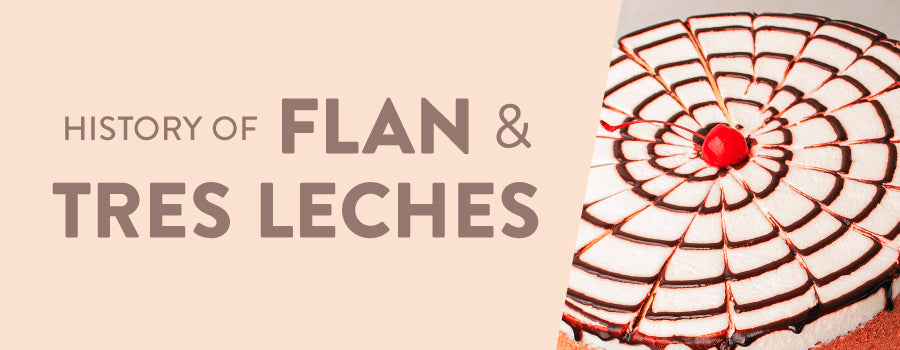HISTORY OF TRES LECHES & FLAN

Cinco de Mayo is coming up and Mexican-American families all over are getting their desserts ready! What's abuela and the tias preparing for dessert? You can usually bet it'll be a flan or tres leches cake!
So where do they come from anyway? Why do so many families default to flan and tres leches?
ORIGIN OF TRES LECHES
The history is murky, but cross-referencing multiple historical accounts leads us to believe the Tres Leches concept originated in medieval England. During this time, people made use of everything to leave no waste. Stale bread was soaked in milk to make it palatable and from there it made its way down to the rest of Western Europe before colonization in Latin America.
The English colonization of Nicaragua in the 1600s also meant English desserts, like milk and bread, were brought over as well. Over the next two centuries, sugarcane and cattle production in Nicaragua would skyrocket and once canned milk hit the shelves in the 1850s, the first tres leches cakes were born.
The recipe made its north into Mexico where, in the 1930's, Nestle picked it up, printed it on their cans, and distributed it all over Latin America. The cake has been a staple in Mexico ever since!
ORIGIN OF FLAN
Flan goes back quite a bit further, starting with the Romans. From the Old High german word "Fladon" meaning "flat cake", flan was originally a savory dish, made from meat or fish. With the addition of honey and a substitution of meat for eggs, the dish took on its familiar dessert form. It wouldn't be until it made its way into Spain where the signature caramel drizzle would be added. Once Spain brought flan into Mexico, notes of coffee and chocolate were added and flan finally became the iconic treat we know today.
MODERN MEXICAN TRADITION
It's no surprise that celebrations in Mexican families tend to feature a flan or Tres Leches. The origins of these recipes were intended to be as simple as the flavors are complex. With so few ingredients and an extremely accessible recipe, the results are delicious and plentiful – perfect for any gathering or...just a treat for yourself!

